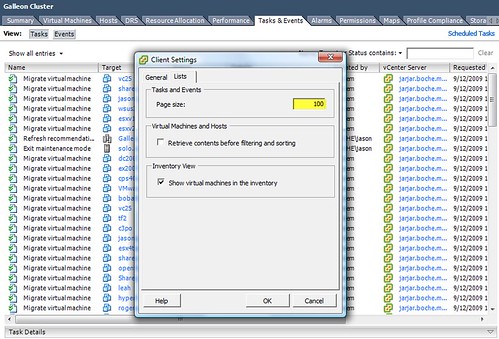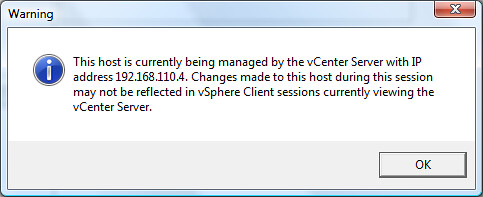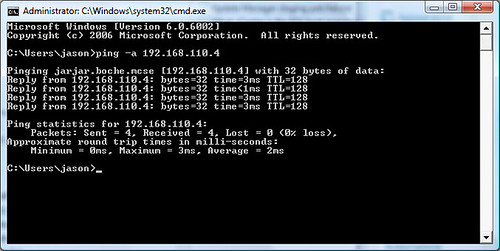Here’s a collection of quick hits I’ve been meaning to get to. Individually, their content is a bit on the short side for the length I normally like to write so I thought I’d throw them together in a single post and see how it comes out.
Tasks and Events List Lengths
First up is the listing of Tasks and Events in the vSphere Client. Have you ever started troubleshooting an issue in the vSphere client by looking at the Tasks or Events and the chronological listing of events doesn’t go back far enough to the date or time you’re looking for? Not finding the logs you’re looking for in the vSphere Client usually means you need to open a PuTTY session and start sifting through logs in /var/log/ or /var/log/vmware/ in the Service Console. The reason for this is that the vSphere Client, by default, is configured to tail the last 100 entries in the Tasks or Events list. You can find this setting in your vSphere Client by choosing “Edit|Client Settings” then choose the “Lists” tab:

Simply increase the value from 100 to whatever you’d like, with 1,000 being the highest allowable value. Notice that when this number is increased, you will immediately see more history. In other words, you don’t have to necessarily wait for time to pass and more historical events to accumulate to see the additional rows of information. Also note that this is a vSphere Client setting which is retained client side and applies to both vCenter Server and ESX(i) host connections.
Collecting diagnostic information for VMware products
Like any offering from a software or hardware vendor, VMware products aren’t perfect. During your VMware experience, you may run into a problem which requires the intervention of VMware support. More often than not, VMware is going to ask you to generate a support bundle which consists of a collection of diagnostic and configuration files and logs. Following this paragraph is a link to VMware KB1008524 which contains links to creating support bundles for various VMware products. Note that in some cases there are different methods for different versions of the same product. If you choose to create a VMware SR online, it is helpful to have created these log bundles in advance so you can attach them to the SR. If you’ve done VMware support long enough, you already know how to FTP log bundles to VMware after an SR number has been generated.
Collecting diagnostic information for VMware products
New VMware Update Manager won’t download ESX(i) patches
Scenario: You’ve built a new VMware vCenter Server in addition to a new VMware Update Manager Server (VUM). After properly configuring Update Manager as well as the necessary internet, proxy, baseline, and scheduled task settings, VUM proceeds to download Windows, Linux, and application patches, but it won’t download ESX(i) host patches. As I found out by trench experience, the cause is because no ESX(i) hosts have been added to the vCenter Server and thus no hosts are being managed by VUM. You need to add at least one ESX(i) host to vCenter Server before VUM will be triggered to suck down all the host updates. One might then ask why guest patches are being downloaded. The only answer I have for the inconsistent behavior is due the fact that ESX(i) host patches are downloaded from VMware, while guest OS and application patches are downloaded from a completely different source, Shavlik. The mechanics behind the download processes obviously differ between the two.
What vCenter Server is this ESX(i) host managed by?
Scenario: You administer a large VMware virtual infrastructure with many vCenter Servers. You need to manage or configure a host or cluster but haven’t the slightest idea what vCenter Server to connect to. You can easily find out by attempting a Virtual Infrastructure Client connection to the host in question. Shortly after providing the necessary host credentials, the IP address of the vCenter Server managing this host will be revealed:

Now in theory, you could establish a Virtual Infrastructure Client connection to the IP address, however, I don’t like this because it dirties up the cached connection list with IP addresses which are meaningless short of having them all memorized. I prefer to take it a step further by opening a Command Prompt and using the command ping -a <IP_address> to reveal the name of the vCenter Server managing the host:

The command above reveals jarjar.boche.mcse as the vCenter Server which is managing the ESX(i) host I was wanting to manage via the vCenter Server.
I’m sure a PowerShell expert will follow up with a script which makes this process easier but this a good example to follow if you don’t have PowerShell or the VI Toolkit (Power CLI) installed.
















#Ask and you shall receive 😉
$VMHost = ‘ESX1.Get-Admin.Local’
$Credential = Get-Credential root
$null = Connect-VIServer -Server $VMhost `
-WarningAction SilentlyContinue `
-Credential $credential
$si = Get-View ServiceInstance
$sm = Get-View $SI.Content.SessionManager
$null = [regex]::Match($sm.Message,”(?(\d{1,3}.){3}\d{1,3})”)
cls
write-host “$($VMhost) belongs to: ” -NoNewline
write-host ([net.dns]::Resolve($Matches.ip).hostname) -For Yellow